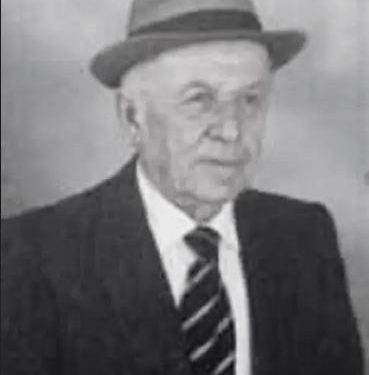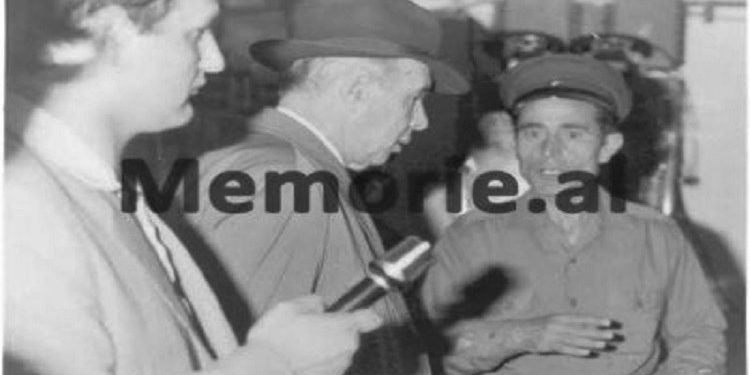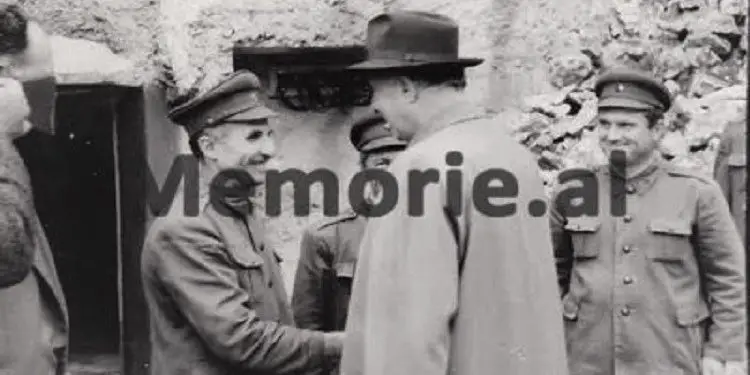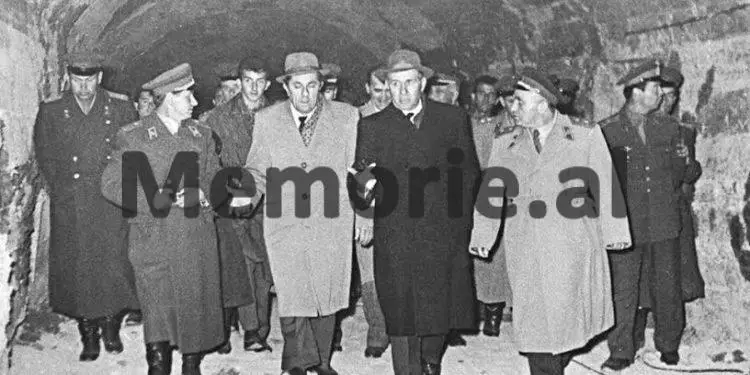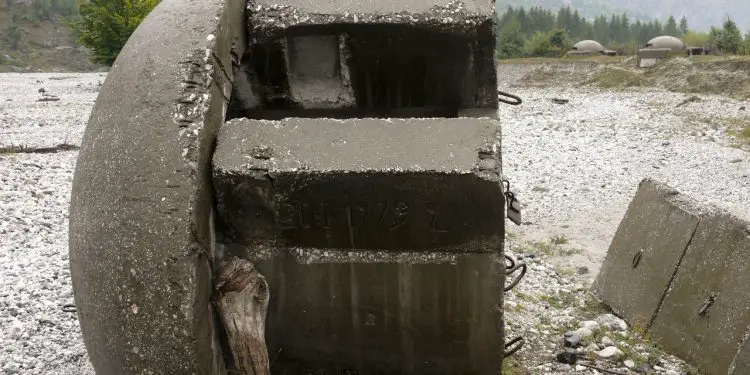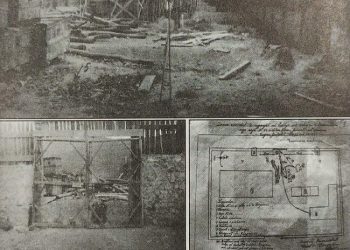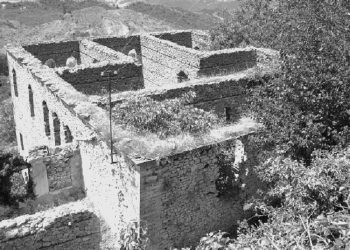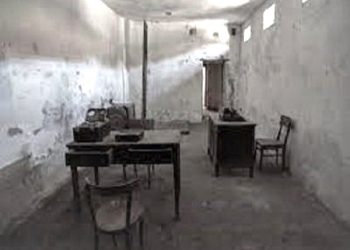By Fahri Musliu
Memorie.al / “Concrete mushroom”, about 600 thousand, a symbol of the terrible past. If today, instead of bunkers, houses were built, the citizens of Albania would not have problems with housing. Because the costs of the smallest bunker would be equal to the costs of a one-and-a-half-bedroom apartment.” In no country of the former communist Eastern Bloc, there are such cruel traces of the past and dictatorship, as in Albania. These are bunkers, or as others call them – “Concrete Mushrooms”, which most strikingly symbolize a crazy and paranoid government that kept the country and its citizens in complete isolation and fear, from “enemies of of all colors”.
Although Albania can be written about different topics, the history of bunkers has intrigued me since 1990, when I first visited the country. I wanted to know more about those abandoned buildings that cover the whole country and serve no purpose!
Last month, while I was sitting in one of the many cafes in the center of Tirana, talking with friends, at the adjacent table, an old gentleman was sitting, whom a colleague told me, that his name was Josif Zegali and that he had designed the bunkers in the country, by order of the then Enverist regime. That’s why they call him “Colonel Bunker” and according to his confession, the well-known Albanian director, Kujtim Çashku, made a film with that name, a colleague introduced me to it and Josif Zegali, happily accepted the conversation.
After a few minutes of conversation, about everyday life, at no point did I understand the man, it was not easy for him to turn the film back 35 years ago and evoke everything he experienced, his family and the whole country. …!
– “The concrete domes can be destroyed or moved to other places, which would free up a large area of agricultural land and beautify the landscape”! This is how engineer colonel Josif Zegali, who turned 71, begins his story and adds that; talking about the bunkers today means talking about the whole single story and the dramatic and tragic fates of many people in the country.
-“The idea of bunkers was born in the early 1960s, because then Albania announced its isolation from other communist countries and participated in the ‘Warsaw Treaty’ and Enver Hoxha and his apparatchiks came to the conclusion that the country should to rise completely. Their number was 18-20 times greater than the country’s need for protection, and the task of designing the bunkers fell to me, as an engineer graduated in Moscow and a man with the rank of colonel, of the Albanian army”.
– But, – continues Mr. Zegali, – the history of the Albanian bunkers also has a terrible balance, for him and his family: eight years of imprisonment (1974-’82) and the death of the eldest daughter, who died from suffering and humiliations; divorce and renouncing the paternity of four children, “voluntarily”, in order to save them from the worst. He is sentenced to eight years in prison for; “10 years of delay in the construction of the bunker” and accused of being a “foreign agent”…!
Mr. Zegali remembers those difficult times with pain, which he feels after every word said. Because as he himself says, the construction of the bunker took with it the sweat and blood of Albanian citizens: every year they lost their lives; 70-100 people, all over the country.
– “The task of designing the bunkers fell to me and the team I led, says Mr. Zegali. – Because then, 35 years ago, when I returned from Moscow, as a military engineer, I was appointed chief of the Engineering Staff of the Albanian Army. The issue of bunkers was directly addressed by Mehmet Sehu, the second person in the country, after Enver Hoxha.
– You know, the fortifications in the country began immediately after the liberation of the country, in 1945, as was done all over the world at that time, and Albania was attractive to many countries, due to its strategic location. The Cold War made it even more necessary, but unfortunately, the bunkers were built outside of all military and engineering norms.
Because, while we were working on their drafting, the Political Bureau (Labor Party of Albania) was the one that decided the number and place according to the system; ‘the more, the better’. Enver Hoxha had a clear goal; – to stay in power as long as possible”, says Mr. Zegali and adds:
– “The possibility that NATO, or other Eastern countries, would intervene militarily in Albania was small, but they could influence the overthrow of the communist regime in the country. For this reason, Enver Hoxha’s regime decided to increase the number of bunkers throughout the country, at the beginning of the 1970s, and with it, the construction of tunnels began, in which, in case of war, not only the military industry would be, located there, but also all reserves for state management.
Thus, Albania, with thousands of kilometers of tunnels, became the most tunneled country in the world, after North Korea. The clique in power at that time demanded from us a guarantee for the quality of each individual bunker, – says their architect and adds that; – They could be destroyed, only with 300 artillery shells and continuous fire. We did different tests, we included different animals in them and we shot with different weapons, people and bunkers. Only nuclear, it has not been tested”.
Partisan, engineer, prisoner
Josif Zegali experienced the first turning point in his life in 1943, when he left his studies in Italy and returned to the country to join the Liberation Movement. At the age of 17, he became a member of a well-known partisan group in Peza. The liberation of the country found him commissar of a battalion.
In December 1945, Zegali went to the Soviet Union to study at a military engineering high school. Three years later, he returned to Albania, where he worked in the Ministry of Defense and in 1954, he went to Moscow again and enrolled in the Academy of Military Engineering. He returned to Tirana in 1960, with a degree in military engineering and the rank of colonel.
He had a great career ahead of him: he became Chief of Staff of the Ministry of Defense Engineering until 1970. By then, he had 14 decorations on his chest, was a candidate for Doctor of Military Sciences and was nominated for the award “Hero of the People”. But none of this helped him avoid Enver Hoxhza’s dungeons. We ask the interlocutor about the number of bunkers and the price of chestnuts?
– “In 1974, I signed a contract with China for the purchase of 3,000 tons of armor and thousands of tons of cement, since until then, a large number of smaller bunkers had been built. I don’t know the exact number, but figures. it is about 600,000 bunkers, of different profiles, from those for individuals, to those for collectives, with the size of platoons and companies.
If today, instead of bunkers, houses were built, the citizens of Albania would not have problems with housing. Because the costs of the smallest bunker would be equal to the costs of a one-and-a-half-bedroom apartment. Or another example: 1 kilometer of asphalted road would be built with 20 smaller bunkers”.
– Many officers of the Albanian army understood the madness and euphoria of the party, for the bunkerization of the country, but they were afraid to say something. However, some of them resisted and were declared by the authorities as: “enemies of the country and the people and putschists”, and that group of senior officers was liquidated in the summer of 1974 and the largest group was severely punished, with imprisonment, exile, or shooting.
Colonel Zegali could not avoid the punishment that his colleagues experienced. He is sentenced to eight years in prison, for the charge of “sabotage” and “foreign agent”. “This is where my personal and family drama begins,” Mr. Zegali says in a worried tone. Three of the four girls were interned in Saranda, Librazhd and Pukë, while the wife and little girl were expelled from their home and from work…! I got out of prison in 1982 and was amazed at the stupidity of this system when I saw the extent to which bunkers covered the country!
I wrote to Enver Hoxha and asked him to stop this nonsense. But three weeks later, I was arrested again and held in a cell for 126 days. Suffering affects the family again, which is almost falling apart. Tamara, the eldest daughter, dies at the age of 34, as a mother of three children. It is a painful and tragic fate, not only for me and my family, but also for thousands and thousands of such families in Albania, who experienced the dictatorship of Enver Hoxha”, he says.
Although Josif Zegali worked as an architect, in something that did not help the country, he does not accept that criticism. – “I worked as an engineer, for the good of the country, but others were the ones who damaged it. Anyone who had done what I did would surely have had the same fate,” says Mr. Zegali resignedly.
Mr. Zegali, although in advanced years, seems to be looking for what he was not looking for twenty years ago. He believes that the bunkers are still valuable works. Because 70 percent of those bunkers can be removed or used for different purposes. For the construction of dams, or various ports, as a base for highways. “Bunkers,” says Zegali, “can be recycled, also because in Germany and the USA, there are such machines that break these buildings and separate the concrete from the reinforcement, which can be used in construction as free material.”
The story of the bunker has taken place in one of his manuscripts, which is awaiting publication. It is a topic that talks about the fate of 300 soldiers of the Albanian army, who experienced the worst, during Enver Hoxha’s regime.
The movie “Colonel Bunker”
Whenever Mr. Josif Zegali, meets actor Agim Qirijaqi, in the streets of Tirana, tells him; “Where are you, Colonel Bunker”, while the actor replies: “I’m in the movie, but you’re a real colonel”. Josif Zegali is so real that his story actually inspired the well-known Albanian director, Kujtim Çashku, to make a film, called; “Kolonel Bunker” (Kolonel Bunker), one of the most successful co-productions, with the French and the Poles.
Albanian totalitarianism encouraged Kujtim Çashku to present the aforementioned tragedy. Zegal’s presence, at the beginning and during the shooting of the film, helped the director to find details and characters for his script. “With the help of the bunker symbol,” says Çashku, “I tried to convey to people the idea that collective paranoia was created against an imaginary enemy that never appeared and we never know who it is.
Let’s think for a moment, the sense of alarm and a possible war, which was creating a traumatized Albania”!
And to present that reality, the bunker appears as we see it, in real life: someone makes love in it, secured by a “socialist shield”, while someone else turns it into a toilet. Memorie.al




